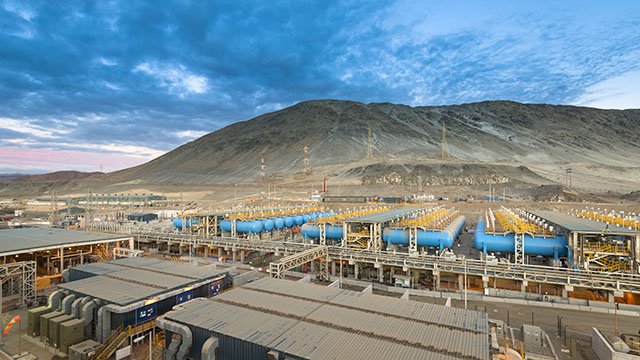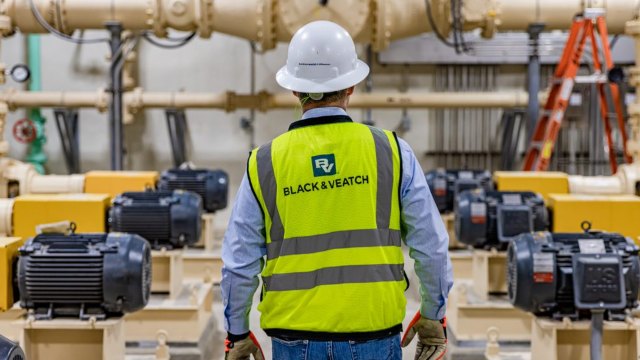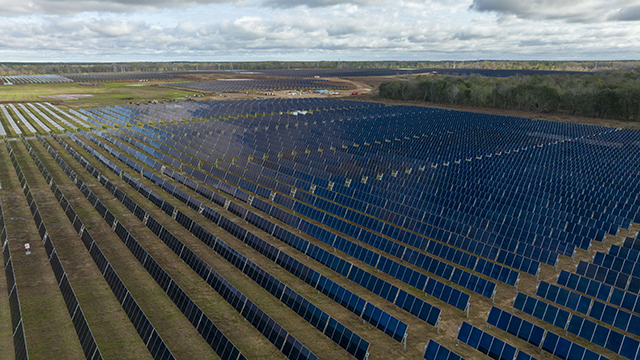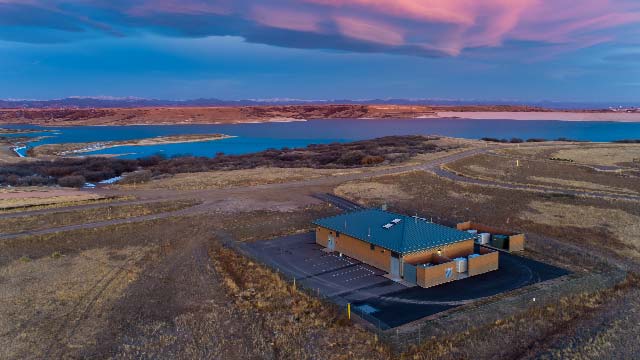With the recent EPA proposal concerning strict carbon levels from existing power plants, owners with facilities out of compliance generally have three options – retrofit to meet emissions standards, convert to an alternative fuel or close the plant. While natural gas conversion is a strong option for some plants, another alternative is either biomass co-firing or making a complete biomass conversion.
In the last two decades, Black & Veatch has studied what it takes to implement a biomass conversion at more than 70 fossil-fired units. Make no mistake about it – it is not an easy process. Yet it most definitely can be accomplished and can extend the life of a facility.
Biomass firing is the norm within the pulp and paper industry (naturally), and is not uncommon among off-grid industrial units. However, biomass for utility-scale power generation is rare in the U.S. According to the Federal Energy Regulatory Commission (FERC), operating biomass power capacity is only 15.8 GW, representing 1.4% of the total U.S. generation mix.
Europe and the developing world are currently the leaders in biomass fuel on a utility scale. One of the most notable success stories to date has been the cofiring and conversion work at the 3,960 MW Drax Power Station in the UK. The station has a goal to reduce greenhouse gas (GHG) emissions by more than 70 percent and has explored burning several biomass fuels, such as willow, straw, wood pellets and agricultural waste. The current plan is to convert three of the six units at Drax to exclusively biomass by 2016. One unit conversion is already complete.
In the U.S., despite slow acceptance, net biomass use is increasing for electrical generation. According to the Business Council for Sustainable Energy, 230 MW of biomass capacity were added in 2013. Should a GHG emissions or carbon tax be levied in the future, or the price of natural gas increases significantly, then using biomass may be an option a utility can’t ignore.
For example, Portland General Electric (PGE) has agreed to stop burning coal by 2020 at its 585 MW Boardman Power Plant in Oregon. While it is determining how it will replace that amount of generation, it is also studying the possibility of converting the plant to biomass. “PGE began investigating whether the facility could continue to serve our customers with a different fuel,” a company statement on its web site says. “PGE is studying the potential for biomass as a replacement fuel. The utility is testing potential biomass fuel stocks and working with local growers and other organizations to evaluate their availability. Research is in its early stages.”
Converting to Biomass
So what does it take to make a biomass conversion? Here are some of the recommendations and challenges that need to be overcome:
- Increased housekeeping should be implemented to control dust and spilled fuel from the tripper to the feeders.
- Improved fire detection and suppression systems may be needed for the coal conveyors, tripper room and bunkers.
- Mill roll wheels should be modified with slots cut into them, to give the wheels more “bite” into the biomass fuel. Roller spring adjustments may also be required.
- Biomass fuel can stick in bunker hoppers and clog feeders, requiring vibratory shakers or even redesign of the hoppers.
- Ball tube mills may require additional vigilance to ensure that the fuel and balls don’t conglomerate together into a solid mass.
- Classifier settings will need adjustment for biomass use. Some plant engineers have opted to open up classifiers to avoid accumulating stringy, oversized biomass.
- Mill air flow must be checked, and air gaps closed, to prevent under-bowl fires.
- Primary air ducts should be checked to ensure light biomass dust does not backflow and accumulate in expansion joints, leading to a potential fire or explosion risk.
- Special care should be taken to sweep mills clean of biomass material during shutdown.
It is important to maintain a consistent biomass quality and quantity entering the furnace, so operators are able to keep the units tuned for the best balance of unburned carbon, carbon monoxide, nitrogen oxide and furnace deposition.
Assuring Supply of Biomass Fuels
Finding a suitable biomass supply at a competitive price can be difficult for some plants owners. Suppliers are often small “mom and pop companies” and may be geographically remote from the power plant. One solution is for the utility to take ownership of its biomass fuel. Such is the case with Drax Power, which is building biomass pellet plants in Louisiana and Mississippi and shipping the pellets back to North Yorkshire, England. Designed to produce more than 900,000 tons per year of wood pellets, these plants are a first step toward Drax’s ultimate goal of producing 2 million tons per year.
Biomass storage and handling logistics should also be considered. Biomass is typically delivered by truck, and a truck can hold from 25 to 35 tons. If cofiring with coal, converting 10 percent of a 250 MW power plant will require about two to three biomass truck deliveries per hour. Concerns from local residents to increased traffic will have to be addressed. It is also prudent to have a “staging area” available for the trucks to avoid backups within and outside the plant.
Covered biomass storage is recommended or required for most fuels to reduce reclaim efforts and to protect the biomass from degrading. A high level of dust is created during handling, especially at transfer points. Biomass dust is generally less harmful to humans and the environment than coal dust, but it can be susceptible to hazardous mold accumulation, which can affect the health of both the fuel yard staff and nearby residents. Compared to coal, biomass dust is significantly more fire-prone due to its relatively low ignition temperatures.
Making the Switch
Though it is true that inexpensive natural gas currently dampens the enthusiasm for biomass, many power plants have no suitable gas supply options. Some power plants are located near plentiful biomass sources, and others have the ability to produce their own fuel. For plants that need to make changes to come into new emissions compliance, biomass offers an option that has several advantages.
Subject Matter Expert
Una Nowling: NowlingUC@bv.com
Contact us to learn more about what we can do for you.








